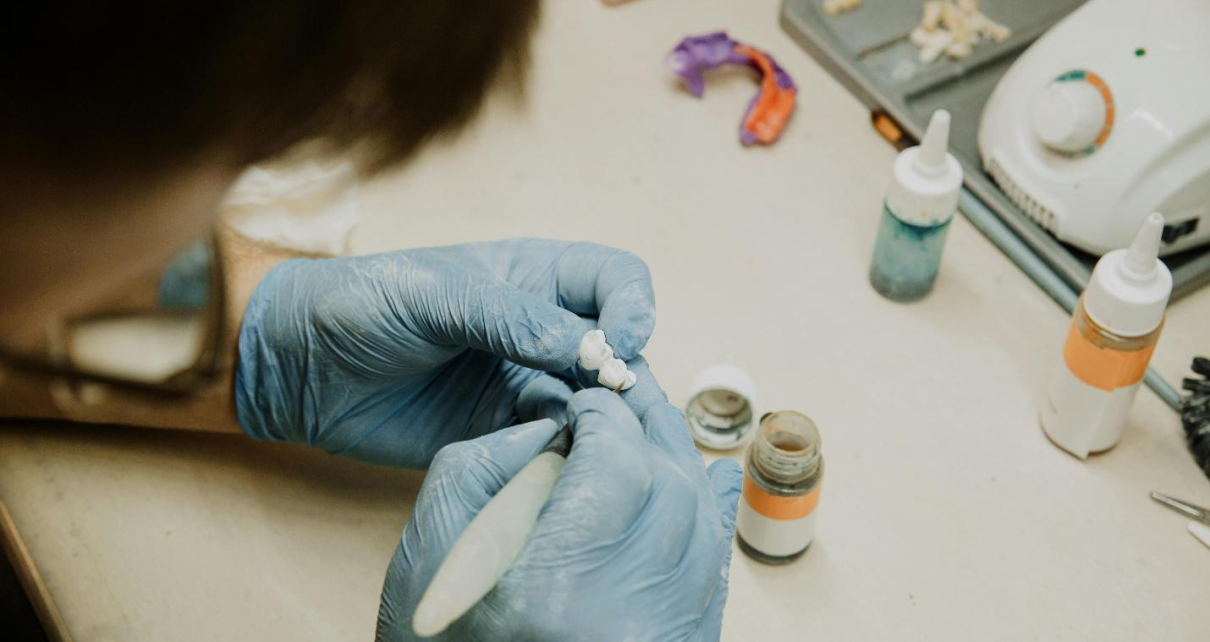Dental implants are modern alternatives to missing teeth that utilize biology, engineering, and careful planning. For adults who are considering options, understanding how implants function with the jawbone, gums and bite forces helps clarify the decision.
Visit https://www.fda.gov/medical-devices/dental-devices/dental-implants-what-you-should-know to know more about dental implants.
This overview will provide understanding of what implants are, how they function, and how they fit in with other tooth replacement treatments.
What Are Dental Implants?
A dental implant is a small post—most often titanium and sometimes zirconia—surgically placed into the jawbone where a tooth root previously was located. Once healing has occurred, an abutment connects the post to a custom crown that matches adjacent teeth. Unlike dentures or bridges, an implant is self-standing and does not rely on neighboring teeth for support.
Because a dental implant replaces the root of the tooth, it allows for bone and gum shape to be maintained over time. This root-level stability has value from a health point of view in both family and cosmetic dentistry where function and appearance must work together. In restorative dentistry, implants can be used to support single crowns, multi-tooth bridges, or even full-arch prosthetics if many teeth are missing.
How Do Implants Work?
Dental Implants work because of a biological process called osseointegration. The bone cells will grow and lock onto the micro-texture of the implant surface and allow for a stable long-term anchor. For an implant to function as a post for the artificial tooth, the post must allow for the transfer of chewing forces into the jawbone to maintain healthy bone structure, just as a normal root would. Some clinics that use Milwaukee’s premium dental implants use advanced imaging and surface technologies to encourage shorter timeframes for this integration with more predictability.
If you have many more questions, coordinated treatment planning before, during and after surgery is very important. Dentists assess bone volume, the health of the gums, and the bite so the final crown will act like a real tooth. It is simple, but all steps are important:
- Assessment and planning, which uses 3D scans to measure bone height and width, and periodontal care to reduce gum inflammation before placement.
- Surgical placement positions the implant at an angle and depth that will work with the future crown and bite.
- Healing phase, when the bone integrates with the implant surface over a period of time, a week to a few months, which is osseointegration.
- Abutment and crown, which are a connector and custom crown that will enable chewing, speech, and smile line.
- Maintenance, which is normal cleanings and home care that enable the implant and surrounding tissues to be healthy.
Some practices also incorporate digital design software that allows the procedure to be mapped out virtually in its entirety, reducing surprises and increasing accuracy surgically.
Benefits Beyond Appearance
Implants look natural, but the greatest benefits are often functional. Chewing efficiency improves as compared to removable dentures, and most patients experience clearer speech because a stable tooth doesn’t shift. An implant enables normal forces to be transmitted into bone to help prevent the “sunken” look that may develop over many years without roots in the jaw.
Implants help protect neighboring teeth; since a single-tooth implant is independently retained, it does not require grinding down adjacent teeth as a tooth supported bridge. Well-planned dental implants can establish a functional bite, distributing force equally, relieving stress on the joints, and prolonging the life of crowns and fillings.
Long-Term Success Rates
Long-term studies consistently demonstrate high survival rates for dental implants with appropriate planning and maintenance. The ten-year success rate is usually around 90–95%, even higher in patients who are healthy and non-smokers. Success is determined by multiple factors including biology and technique, which warrants the need for complete and thorough prosthodontic planning.
Generally, the following factors tend to have the most influence on longevity:
- Bone quality and quantity: Denser bone (found particularly in the lower jaw) supports a higher success rate. Click here for more information.
- Gum and tissue health: Stable, well managed gums and tissue reduce inflammation around the implant site.
- Bite forces and design: Proper position of the implant, crown design, and distribution of load reduce stress factors.
- Medical and lifestyle factors: Using nicotine products, uncontrolled diabetes, and poor hygiene are risk factors.
- Follow up care: Regular exams and cleanings will provide an opportunity to identify early signs of infection and ongoing issues before they can jeopardize stability.
Some researchers continue to assess potential uses of newer biomaterials and coatings designed to improve the long-term reliability of dental implants; a good sign for future patients in providing better options for longevity.
Alternatives to Implants
Dental implants are not the only modality for re-establishing a complete smile; any treatment plan should be individualized with respect to risks and benefits, costs, and time. If there are no adjacent teeth to extend to or other issues, patients with one missing tooth can often be offered a traditional bridge to the teeth on either side. This is a relatively quick way to restore chewing function but typically involves shaving down healthy adjacent teeth.
Patients interested in replacement of multiple missing teeth, when some or all are missing, removable partial dentures often provide effective function flexibly for lower cost; however, removable partial dentures provide less stability and may negatively affect speech or taste. A resin-bonded (Maryland) bridge may be appropriate for a specific case involving a few anterior teeth that are edentulous, have limited occlusal forces, and have forces actively project esthetics.
Patients who have active gum disease, patients who have insufficient amounts of bone, or patients with significant medical issues may first require staged care such as bone grafting or considerable periodontal care first before an implant can be considered. Hopefully, others may simply determine that it is acceptable to consider a non-implant solution that meets their goals sufficiently at this time and recognize that implementation of implants may be in the future depending on their health and priorities at that time.
Dental professionals may recommend a full consultation and discussion of the individual risks and benefits associated with each method so that the patient can make objectively informed choices regarding what is best for them without undue pressure.
Conclusion
In every scenario, optimal outcomes come from a team that assesses and combine good function and esthetics as a team, often with different disciplines. Collaboration between general dentists, oral surgeons, and prosthodontists enhances the opportunity for the two factors important to comprehensive care to work together: function, esthetics, and in this case speech.





